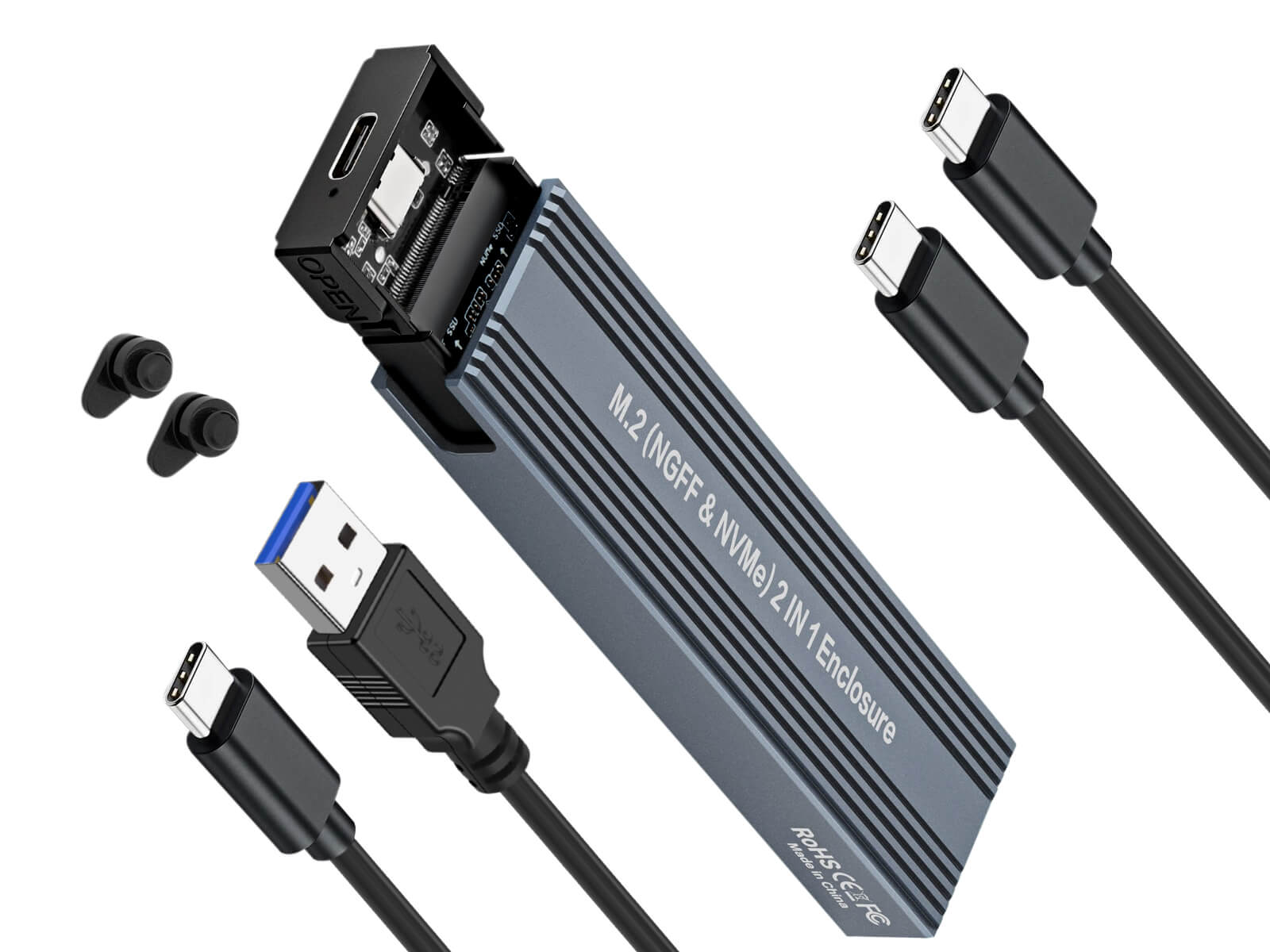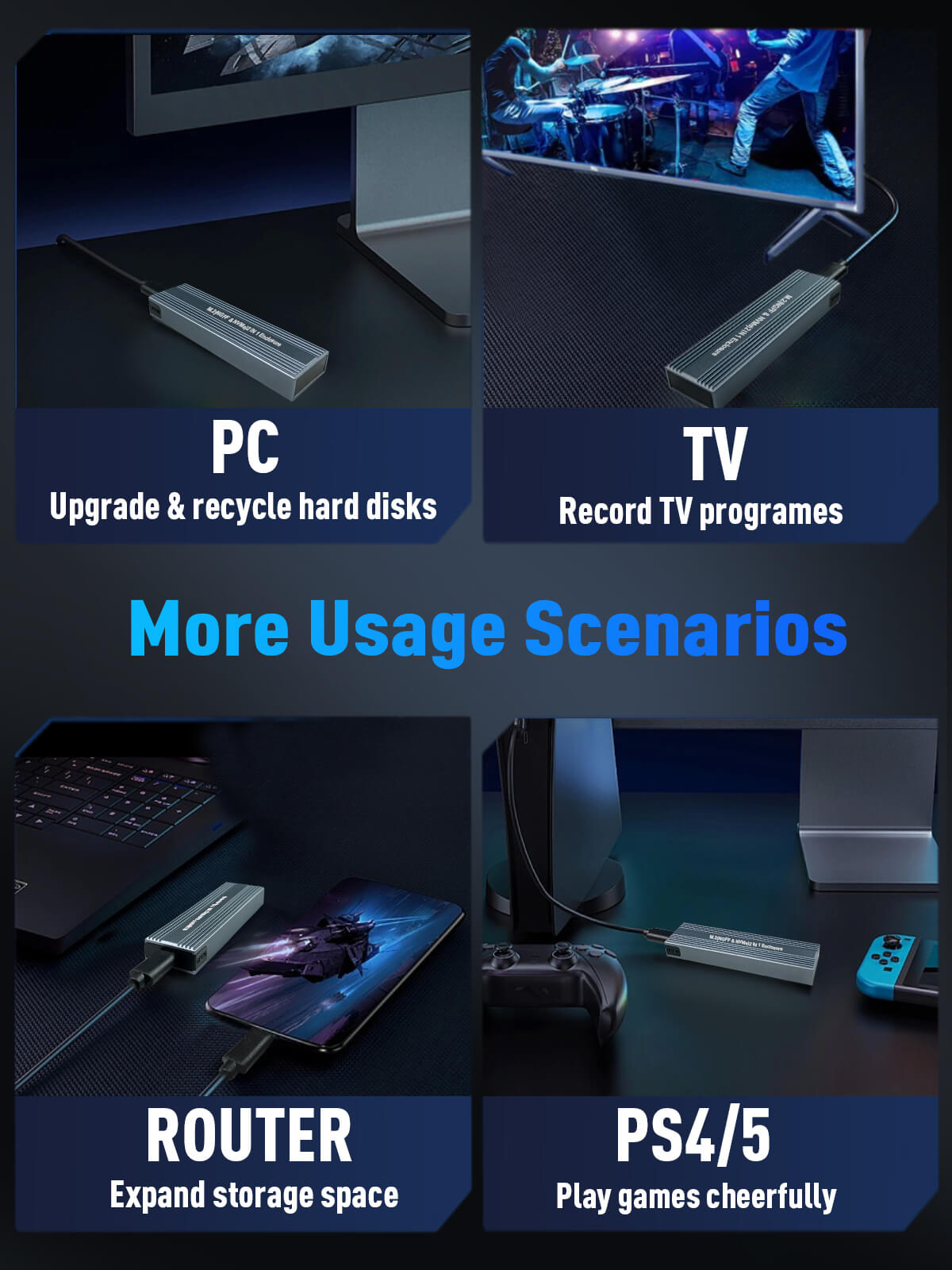In the ever-evolving world of technology, data storage has undergone significant advancements. Among these developments, the external Solid State Drive (SSD) is a revolutionary device that has transformed data storage and access.
With superior speed, reliability, and portability, external SSDs have become a favored choice for tech enthusiasts, professionals, and everyday users. This comprehensive guide aims to provide insights into understanding external SSDs, troubleshooting common issues, and provide a step by step install tutorial.

What is an External SSD?
External solid-state drive are portable data storage devices that connect to computers and other electronic devices via USB or other interfaces. Unlike traditional hard drives, which rely on spinning disks and mechanical parts, SSDs use flash memory to store data. This solid-state technology enables SSDs to read and write data much faster than their hard disk drive (HDD) counterparts.
There are several benefits of using an external SSD over an internal one. Chief among these is portability. External SSDs can be easily connected to multiple devices, providing a seamless way to expand storage capacity without opening up a computer. Compared to traditional external hard drives, SSDs are faster, lighter, and more durable, as they are less prone to mechanical failure due to their lack of moving parts.
Uses of External SSD
Data Backup: In an era where data integrity and security are paramount, having a reliable backup solution is essential. External SSDs provide a robust solution for storing important files, such as photos, videos, documents, and even system backups. Their rapid data transfer rates ensure that large volumes of data can be backed up quickly, reducing downtime and enhancing productivity.
File Transfer: For professionals who frequently handle large files, such as video editors, photographers, and designers, external SSDs offer an invaluable tool. Transferring gigabyte-sized files between devices can be completed in seconds rather than minutes, streamlining workflows and enabling more efficient project management.
Running Applications: One of the lesser-known but valuable uses of external SSDs is running applications directly from the drive. This is especially beneficial for software that demands significant storage and speed, such as video editing software, design programs, and high-performance games. By offloading applications to an external SSD, users can free up their device’s internal storage and enjoy faster load times and smoother performance.
Storage Expansion: Many modern devices, including ultrabooks, tablets, and gaming consoles, with limited internal storage. External SSDs provide a convenient way to expand storage capacity without compromising performance. This allows users to store more applications, games, or multimedia files without worrying about running out of space.

How to install a external SSD | Step by Step
Just following these steps, you can install external SSD easily.
1. Prepare the SSD and its components
2. Press the shell and slide it open
3. Remove the heat sink
4. Align the slot and insert the hard disk
5. Gently press the SSD to snap in place
6. Lock the screw that to fix the hard disk
7. Fits back in the base of the hard drive cassette
Then you can use the USB-C cable that came with your external SSD to connect it to your device.
There are two videos that can help you to use a external SSD
1. External SSD Install Tutorial
2. Connect External SSD to Your Device
Why is My External SSD Write Speed So Slow?
Despite their impressive speed, users may occasionally encounter slow write speeds with external SSDs sometimes. Understanding the potential causes and solutions can help optimize performance and maintain efficiency.
Common Causes:
Connection Interfaces: The speed of data transfer can be significantly affected by the type of USB connection used. For instance, USB 3.2 offers much faster speeds compared to USB 2.0. Using outdated cables or ports can bottleneck the SSD’s performance, limiting its potential.
Hardware Limitations: The external SSD's performance can be hampered by the host device’s hardware capabilities. If the computer’s processor or RAM is insufficient, it may hinder the SSD’s performance, resulting in slower write speeds.
Software Issues: Misconfigured software settings, outdated drivers, or firmware can also contribute to slow write speeds. Ensuring the operating system and all related software are up-to-date is crucial for optimal performance.
Troubleshooting Tips:
Upgrade Cables and Ports: Ensure you're using the latest USB cables and compatible ports on your device to maximize speed. Consider using Thunderbolt connections if available, as they can offer even higher data transfer rates.
Update Drivers and Firmware: Regularly check for updates to drivers and firmware for both the SSD and the host device. Manufacturers often release updates that improve performance, enhance compatibility, and fix bugs.
Optimize Operating System Settings: Adjusting settings in the operating system, such as enabling write caching, can enhance performance. It’s important to follow manufacturer guidelines to avoid data loss or corruption.
Tag:External SSD




